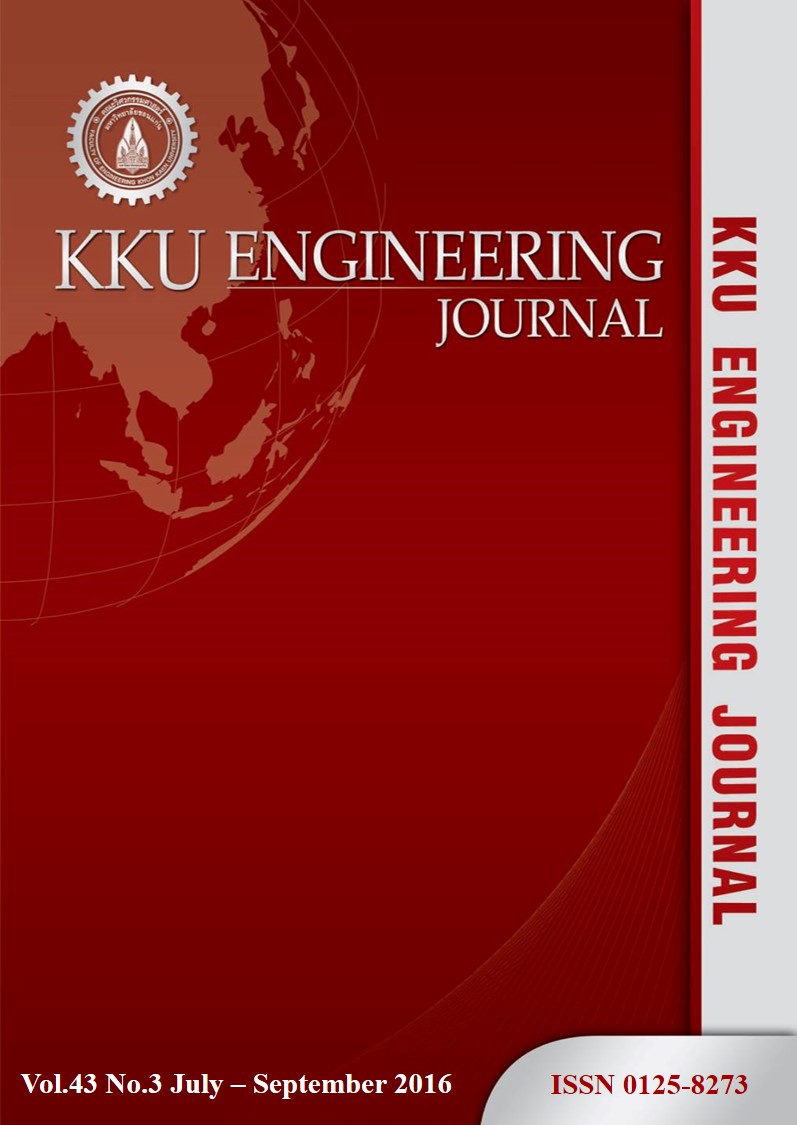Enhancing indoor positioning based on filter partitioning cascade machine learning models
Main Article Content
Abstract
This paper proposes a method, called the filter partitioning machine learning classification (FPMLC). It can enhance the accuracy of indoor positioning based on fingerprinting using machine learning algorithms and prominent access points (APs). FPMLC selects limited information from groups of signal strengths and combines a clustering task and a classification task. There are three processes in FPMLC, i.e., feature selection to choose prominent APs, clustering to determine approximated positions, and classification to determine fine positions. This work demonstrates the procedure for FPMLC creation. The results of FPMLC are compared with those of a primitive method using measured data. FPMLC is compared with well-known machine learning classifiers, i.e., Decision Tree, Naive Bayes, and Artificial Neural Networks. The performance comparison is done in terms of accuracy and error distance between classified positions and actual positions. The appropriate number of selected prominent APs and the number of clusters are assigned in the clustering process. The result of this study shows that FPMLC can increase performance for indoor positioning of all classifiers. Additionally, FPMLC is the most optimized model using a Decision Tree as its classifier.
Article Details
This work is licensed under a Creative Commons Attribution-NonCommercial-NoDerivatives 4.0 International License.
References
Liu H, Darabi H, Banerjee P. Survey of wireless indoor positioning techniques and systems. Systems. IEEE Trans Syst Man Cybern C Appl Rev. 2007;37(6):1067-80.
Lin TN, Lin PC. Performance comparison of indoor positioning techniques based on location fingerprinting in wireless networks. 2005 International Conference on Wireless Networks, Communications and Mobile Computing; 2005 Jun 13-16; Maui, USA. USA: IEEE; 2005. p. 1569-74.
Mok E, Retscher G. Location determination using WiFi fingerprinting versus Wi-Fi trilateration. Journal of Location Based Services. 2007;1(2):145-59.
Mautz R. Overview of current indoor positioning systems. Geodesy and Cartography. 2009;35(1):18-22.
Bahl P, Padmanabhan VN. RADAR: An in-building RF-based user location and tracking system. INFOCOM 2000. Proceedings of IEEE 19th Annual Joint Conference of the IEEE Computer and Communications Societies; 2000 Mar 26-30; Tel Aviv, Israel. USA: IEEE; 2000. p. 775-84.
LaMarca A, Chawathe Y, Consolvo S. Place lab: Device positioning using radio beacons in the wild. In: Hans WG, Roy Want, Albrecht Schmidt, editors. Pervasive computing. Heidelberg: Springer Berlin Heidelberg; 2005. p. 116-33.
Madigan D, Einahrawy E, Martin RP. Bayesian indoor positioning systems. INFOCOM 2005. Proceedings of IEEE 24th Annual Joint Conference of the IEEE Computer and Communications Societies; 2005 Mar 13-17; Miami, USA. USA: IEEE; 2005. p. 1217-27.
Badawy OM, Hasan MAB. Decision tree approach to estimate user location in WLAN based on location fingerprinting. Proceeding of Radio Science Conference 2007; 2007 Mar 13-15; Cairo, Egypt. USA: IEEE; 2007. p. 1-10.
Brunato M, Battit R. Statistical learning theory for location fingerprinting in wireless LANs. Comput Network. 2005,47(6):825-45.
Chen RC, Lin YC, Lin YS. Indoor position location based on cascade correlation networks. Proceeding of IEEE International Conference Systems, Man, and Cybernetics (SMC); 2011 Oct 9-12; Anchorage, Alaska. USA: IEEE; 2011. p. 2295-2300.
Borenović MN , Nešković AM. Positioning in WLAN environment by use of artificial neural networks and space partitioning. Ann Telecommun. 2009;64:665-76.
Chen Y, Yang J, Yin J, Chai X. Power-efficient access-point selection for indoor location estimation. IEEE Trans Knowl Data Eng. 2006;18(7):877-88.
Guyon I, Elisseeff A. An introduction to variable and feature selection. J Mach Learn Res. 2003;3:1157-82.
Quinlan JR. Induction of decision trees. Mach Learn. 1986;1(1):81-106.
Witten IH, E Frank E, Hall MA. Data mining: Practical machine learning tools and techniques. Massachusetts: Morgan Kaufmann; 2011.
Arthur D, Vassilvitskii S. K-means++: The advantages of careful seeding. Proceedings of the eighteenth annual ACM-SIAM symposium on discrete algorithms. Society for Industrial and Applied Mathematics; 2007 Jan 7-9; New Orleans, USA. USA: Society for Industrial and Applied Mathematics; 2007. p. 1027-35.
Holmes G, Donkin A, Witten IH. Weka: A machine learning workbench. Proceedings of the 1994 Second Australian and New Zealand Conference on Intelligent Information Systems; 1994 Nov 29-Dec 2; Brisbane, Australia. USA: IEEE; 1994. p. 357-61.
Kohavi R. A study of cross-validation and bootstrap for accuracy estimation and model selection. IJCAI'95 Proceedings of the 14th international joint conference on Artificial intelligence; 1995 August 20-25; Montreal, Canada. USA: Morgan Kaufmann Publishers; 1995. p. 1137-45.



